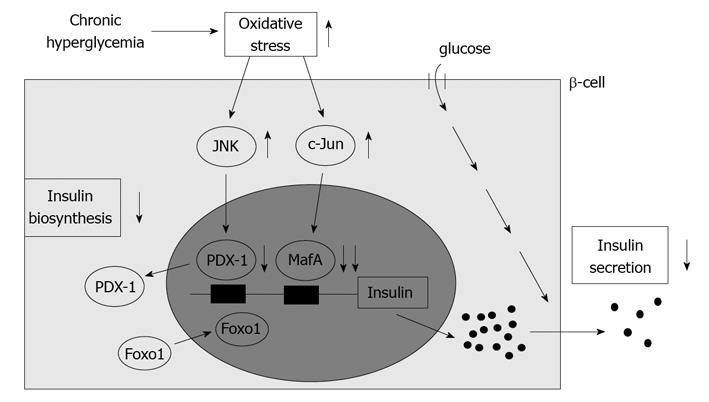Copyright
©2013 Baishideng Publishing Group Co.
World J Diabetes. Dec 15, 2013; 4(6): 263-269
Published online Dec 15, 2013. doi: 10.4239/wjd.v4.i6.263
Published online Dec 15, 2013. doi: 10.4239/wjd.v4.i6.263
Figure 2 Possible molecular mechanism for suppression of insulin biosynthesis in type 2 diabetes.
Under diabetic conditions, hyperglycemia induces oxidative stress and thereby leads to suppression of insulin biosynthesis and secretion which is accompanied by reduction of nuclear pancreatic duodenal homeobox 1 (PDX-1) and MafA expression. Oxidative stress and subsequent activation of the JNK pathway translocate Foxo1 from cytoplasm to nuclei, leading to translocation of PDX-1 from nuclei to cytoplasm in β-cells. In addition, oxidative stress and subsequent induction of c-Jun expression suppress nuclear expression of MafA in β-cells. Therefore, it is likely that induction of oxidative stress and suppression of nuclear PDX-1 and MafA expression are involved in β-cell glucose toxicity found in type 2 diabetes.
- Citation: Kaneto H, Matsuoka TA. Down-regulation of pancreatic transcription factors and incretin receptors in type 2 diabetes. World J Diabetes 2013; 4(6): 263-269
- URL: https://www.wjgnet.com/1948-9358/full/v4/i6/263.htm
- DOI: https://dx.doi.org/10.4239/wjd.v4.i6.263









